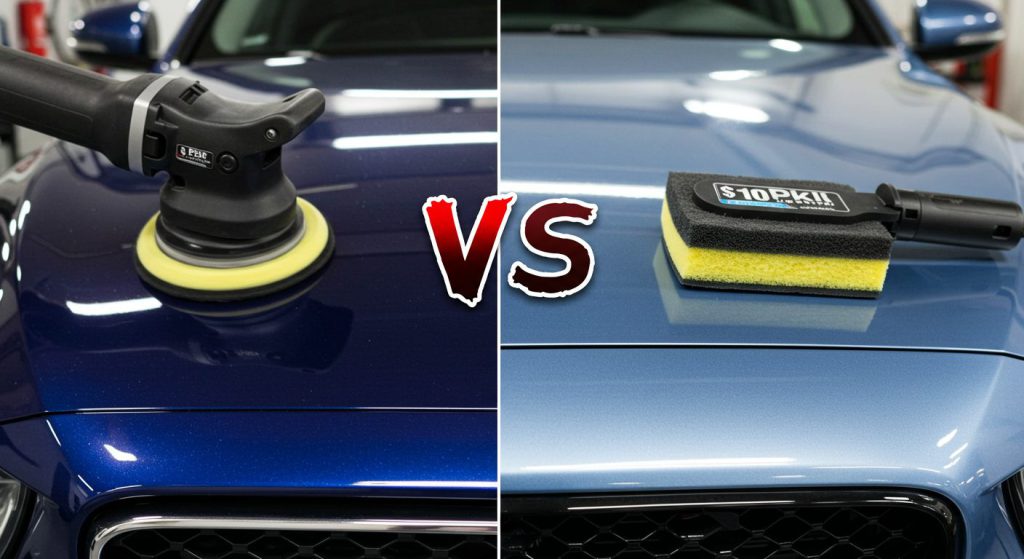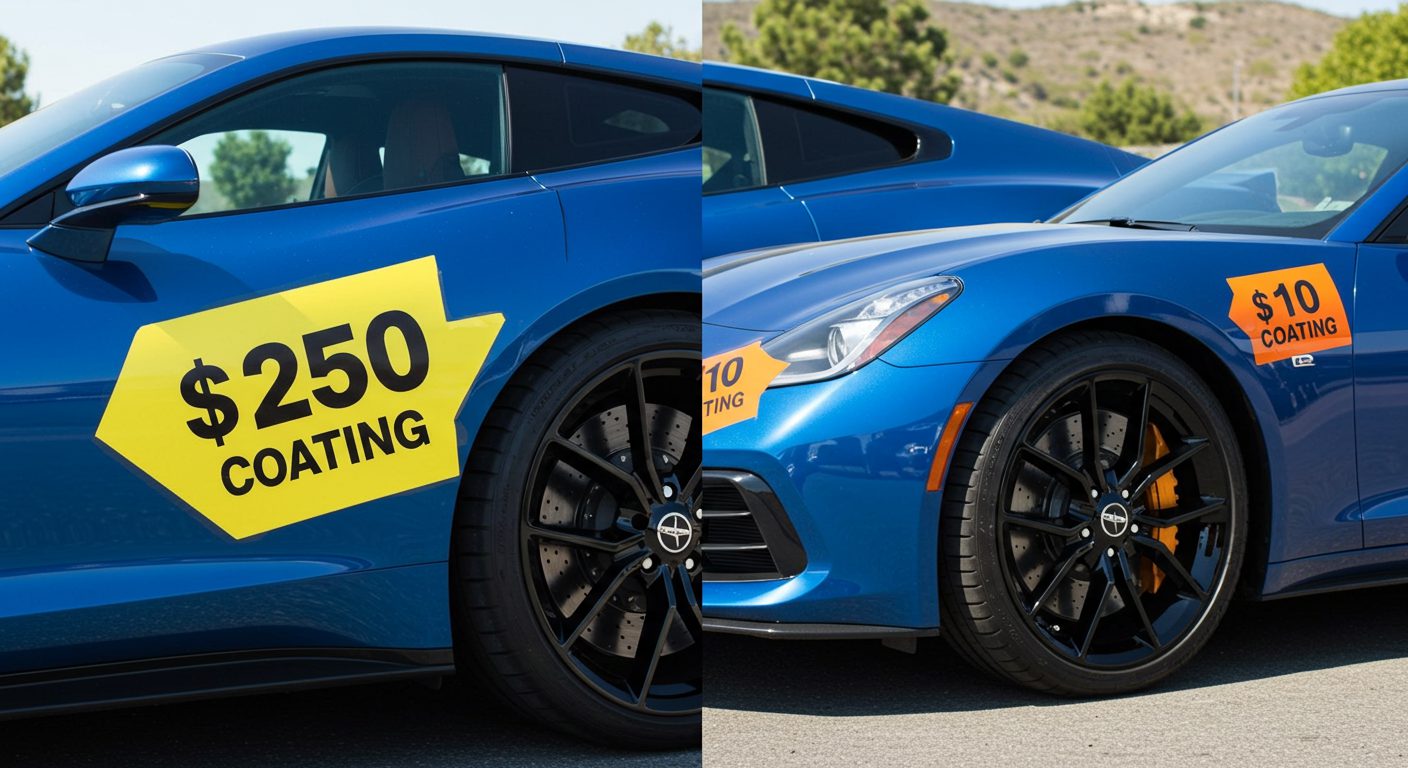You admire your ride, every curve and every chrome detail. Keeping your ride to showroom condition or near it is a different matter altogether. In this case you are thinking, “Does expensive gear truly provide any additional value?” Given the number of self-help articles and product options available online, spending money only brings up even more questions.
Well, the experts at Donut Media tried to answer this with a $10 ceramic coating kit against the $250 kit and had a group of professional detailers use the cheaper covering, coil with the pros. The result? Discovering what really matters in car detailing, is it costly products or experience.
Let us delve deeper into their findings and learn what this entails for car lovers like yourself. Are you ready to make it better? This time without burning a hole in your pocket? Let’s continue.
1. Wheel Cleaning: Your Brush Does More than Just Clean
Cleaning the wheels is generally forgot about the most and also the grimiest part of the car, making it a suitable for the first round. The pros get a basic 5-dollar kit, while one team comes in armed with a $75 kit.
Both teams achieved surprisingly similar results, but the expensive kit’s team did it first. What was astonishing was both teams achieved similar results, although the cheaper set did take some additional time, but in the end both teams achieved surprisingly similar results. The lesson from this? If you expect that set is only good for detailing, then that set will serve for difficult tasks like wooden dirt boxes too. Pro Tip: Always begin with the wheels first. If left until last, they pose the greatest risk of contaminating your wash mitt.
2. Tire Gloss and Trim Shine: Apply Gleam Sparingly
After scrubbing, the next course of action was applying tire gloss. Although this seems like a clear-cut step, mastery of the artistry is key.
While both the professionals and my dollar-store alternative were using the cheaper product, I found that it worked just as well.
What can be learnt is that weather its Five dollar or thirty, the principles of spread and shyness need to be observed. In this instance, less restraint can spoil a great result.
3. Painting with Foam Cannon Vs. Using Buckets
This is the point that I found most entertaining to watch. One team had a five thousand dollar pressure washer system, while on the other side, they relied on the trusty two bucket method.
Judgement? While the side using the foam canon was flashier, both sides ended up with comparable degrees of cleanliness, largely because they used a heavily scratched car as a canvas.
Good knowledge to absorb: For meticulously maintained cars, well maintained equipment is great, but when working with older paint, technique matters.

4. Clay Barring: Removing Markers Wipe over
Before polishing, both teams clay-barred the car—one with a $80 kit and the other with a $10 clay kit, even including some $2 plumber’s putty as an experiment.
Would you look at that? The professional clay bar indeed worked better (unsurprisingly), but, yet again, the results were odically close.
Bottom line: There’s still some level of appreciation for quality here in addition to spending a good amount of time on the task. Claying is about effort, not just price tags.
5. Polishing: When Price Really Shows
Things have taken a turn. A $500 polishing setup yielded better results with deeper gloss, smoother finish, and fewer swirls.
Pros using cheaper gear struggled with control and took a longer time to complete the work, leading to mediocre results.
Takeaway: If there’s one place where gear quality shines (literally), it’s polishing. There’s a tangible difference in the finish and effort when solid machines and compounds are used.
6. Ceramic Coating: More Than Just a Fancy Finish
In the final showdown, the expensive $250 ceramic coating beat the budget-friendly $10 option in terms of water beading and gloss.
Key point: Even a cheap ceramic coating adds a protective, hydrophobic layer to paint. For weekend warriors, the $10 option might be all you need.
7. Experience vs. Product: The Winner
During the investigation, one particular issue kept appearing: skill is also, if not more, important than the cost of the product. The professionals managed to get stunning results even with the cheaper equipment, often competing with the results from the expensive setup.
As the saying goes, the best accessories are advanced understanding, patience, and consistency.
Key Takeaways for Car Lovers:
- Start with quality wheel tools if you detail often—it saves time and effort.
- Don’t overdo tire shine. A little goes a long way for that satin finish.
- Bucket washes still work. Fancy foam cannons are fun but not essential.
- Clay bars need effort, not expense. Do it right, not fast.
- Invest in a good polisher if you’re chasing showroom shine.
- Even cheap ceramic coatings protect. Use them regularly for lasting results.
- Experience trumps gear. Learn the techniques, and the results will follow.
Conclusion: Craft Your Own Detailing Journey
Every car enthusiast knows that detailing isn’t just maintenance—it’s a ritual, a bonding moment between you and your ride. This experiment from Donut proves something powerful: expensive gear can help, but it’s not everything. Experience, care, and consistency? That’s the real magic.
Whether you’re working with a $10 bottle or investing in premium tools, remember—it’s your journey. Try different techniques, find what works for you, and above all, enjoy the process.
So next time you’re out there with your buckets, brushes, and polish pads, just know: your car doesn’t care about the price tag. It just wants to shine. Go make it happen.
